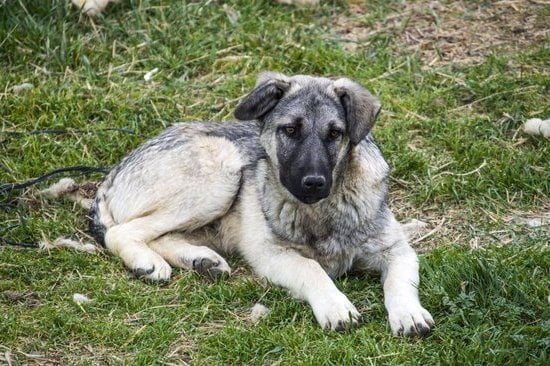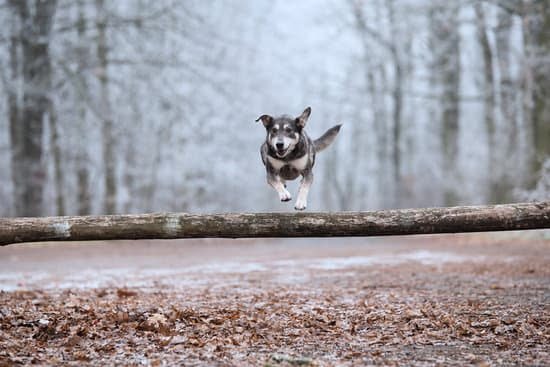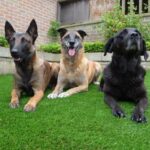Training a dog to point quail is a rewarding experience that requires patience, consistency, and understanding of your canine companion’s natural instincts. Many breeds have been specifically bred for hunting and pointing game birds like quail, making them ideal candidates for this type of training. By tapping into your dog’s innate hunting abilities and guiding them through the process, you can develop a skilled hunting partner that will enhance your outdoor adventures.
Dogs have been used in hunting activities for centuries, with some breeds exhibiting a strong prey drive and natural pointing instinct. Understanding the hunting instinct in dogs is crucial when it comes to training them to point quail effectively. It’s essential to recognize that each breed may have different characteristics and strengths when it comes to hunting, so choosing the right breed for pointing quail hunting is an important first step in the training process.
Before delving into specific quail training techniques, building a strong foundation through basic obedience training is vital. Teaching your dog essential commands like sit, stay, and come not only establishes a line of communication between you and your pet but also sets the stage for more advanced training later on. By laying this groundwork early on, you can create a solid framework upon which to build your dog’s pointing skills as you progress through the training process.
Choosing the Right Breed for Pointing Quail Hunting
When it comes to training a dog to point quail, choosing the right breed is essential. Some breeds are naturally more adept at pointing and hunting than others, so selecting a breed with strong instincts for pointing quail will set you and your dog up for success. Here are some top breeds known for their pointing abilities:
- English Pointer: Known for their exceptional scenting abilities and intense point, English Pointers are a popular choice for quail hunting. They are highly trainable and excel in the field.
- German Shorthaired Pointer: With their strong natural hunting instincts and versatility, German Shorthaired Pointers make excellent quail hunting partners. They are energetic, intelligent, and eager to please.
- Brittany Spaniel: Brittany Spaniels are known for their keen sense of smell and natural pointing behavior. They are quick learners and thrive on positive reinforcement during training sessions.
How to Train a Dog to Point Quail
Training your dog to point quail starts with understanding their breed’s innate abilities. Once you have selected the right breed for pointing quail hunting, it’s time to begin basic obedience training. This lays the foundation for more advanced hunting skills down the line.
- Start with basic commands such as sit, stay, come, and heel. These commands will form the basis of your communication with your dog during training sessions in the field.
- Use positive reinforcement techniques such as treats, praise, and playtime to encourage good behavior. Consistency is key when teaching these commands to ensure your dog understands what is expected of them.
- Practice these commands regularly in different environments to reinforce your dog’s obedience skills. This will help prepare them for the more advanced stages of training where they will be introduced to quail scent and sight training.
By selecting the right breed for pointing quail hunting and establishing a solid foundation through basic obedience training, you can set yourself up for success in teaching your dog how to point quail effectively. Remember that patience, consistency, and positive reinforcement are key components of successful training sessions with your furry companion.
Building a Strong Foundation
During obedience training, it is important to use positive reinforcement techniques such as treats, praise, and pets to reward your dog for following commands correctly. Consistency in training sessions and patience are key components in building a strong foundation with your canine companion. By establishing a clear hierarchy and fostering mutual respect, you can create a harmonious relationship that will benefit both you and your dog during the pointing quail hunting process.
In addition to basic obedience commands, leash manners are also important skills to teach your hunting dog. Proper leash behavior ensures that your dog stays close by your side while out in the field, reducing the risk of them wandering off or getting into potentially dangerous situations. By laying down this foundation of obedience and leash etiquette, you are setting the stage for successful pointing quail training in the future.
| Training Step | Description |
|---|---|
| Establish Basic Commands | Teach sit, stay, heel, come commands using positive reinforcement. |
| Consistency | Regular training sessions and patience are vital for success. |
| Leash Manners | Teach proper leash behavior to ensure safety and control in the field. |
Introducing Quail Scent to Your Dog
Understanding the Importance of Scent Training
When it comes to training a dog to point quail, one of the most crucial steps is introducing them to the scent of the game they will be hunting. Dogs have an incredible sense of smell, and by familiarizing them with the unique scent of quail early on, you are laying the groundwork for successful hunting outings. Scent training helps your dog understand what they are looking for and how to locate it in the field.
Gradual Introduction to Quail Scent
To begin introducing quail scent to your dog, start by using freshly harvested quail wings or feathers. You can find these at hunting supply stores or even ask fellow hunters for some during the off-season.
Place these items in a ziplock bag and allow them to soak up the natural scent of the quail for a few days before introducing them to your dog. Once ready, hide these scented items around your yard or in designated training areas for your dog to find.
Training Techniques for Scent Recognition
When training your dog with quail scent, use positive reinforcement techniques such as treats or verbal praise when they successfully locate and show interest in the scented items. Encourage them to use their nose and follow the trail of scent until they find the source.
Repeat this training regularly to reinforce their understanding of what quail scent means and how they should respond when out in the field. Remember, consistency is key in this training process as it helps your dog build confidence in their ability to track and point quail effectively.
Utilizing Bird Wings for Sight Training
Bird wings can be a valuable tool in training your dog to point quail effectively. By using bird wings, you can help your dog associate the sight of a bird with the scent they have already learned to detect. This helps reinforce their natural instinct to point and informs them of what they should be looking for during a hunt.
To start utilizing bird wings in sight training, begin by introducing your dog to the wings in a controlled environment. Let them sniff and get familiar with the scent before incorporating them into training sessions. You can attach the wings to a dummy launcher or fishing line to simulate the movement of a bird in flight, making it easier for your dog to track and point.
During training sessions, make sure to reward your dog when they successfully locate and point at the bird wings. Positive reinforcement will help solidify this behavior and encourage them to continue pointing during actual hunting trips. Remember to be patient and consistent in your training approach, as every dog learns at their own pace when it comes to pointing quail.
Field Training
When it comes to training your dog to point quail effectively, field training plays a crucial role in honing their hunting skills. This stage of training focuses on putting everything your dog has learned into practice in a real hunting scenario. Here are some key steps to follow when field training your dog:
- Start with short sessions: Begin by taking your dog out to fields where quail are likely to be found for short training sessions. This will help them get used to the environment and the task at hand without becoming overwhelmed.
- Encourage scent tracking: As your dog becomes more comfortable in the field, encourage them to use their sense of smell to track down quail scents. Allow them time to explore and discover the location of the quail before rewarding them for their efforts.
- Practice pointing behavior: Once your dog has successfully located a quail, work on reinforcing their pointing behavior. Use verbal cues or hand signals that signal them to freeze in place when they’ve pinpointed the bird.
Additionally, incorporating simulated hunting scenarios during field training can help prepare your dog for real-life hunting experiences. Utilize decoys or remote-controlled devices that mimic bird movements to create a more authentic hunting environment for your canine companion.
- Gradual exposure: Increase the difficulty level gradually by introducing distractions such as other scents or sounds in the environment while your dog is tracking quail. This will challenge their focus and sharpen their ability to stay on task.
- Reinforce positive behavior: As with any training, consistency is key when teaching your dog to locate and point quail in the field. Be sure to praise and reward them generously whenever they exhibit the desired behavior, such as correctly locating and pointing at a quail.
By following these field training techniques and providing ample opportunities for real-world practice, you can help your dog develop into a skilled quail hunter with a keen instinct for locating and pointing game effectively. Remember, patience and persistence are essential when guiding your canine companion through this exciting journey of mastering the art of hunting quail.
Correcting Mistakes and Reinforcing Positive Behavior
When training a dog to point quail, it is crucial to understand that mistakes will happen along the way. Correcting these errors and reinforcing positive behavior are essential steps in the training process to ensure that your dog develops into a skilled quail hunting companion.
One common mistake is when a dog fails to hold a point steadily or breaks prematurely before you flush out the quail. In such cases, remain calm and use gentle but firm corrections to remind your dog of the expected behavior.
Consistency is key when correcting mistakes during training sessions. Make sure to address any errors promptly and consistently so that your dog understands what they did wrong. Positive reinforcement techniques, such as praise, treats, or playtime, can also be used to encourage desirable behaviors like holding steady on point or successfully locating quail scent. By reinforcing these behaviors, you are helping your dog understand what is expected of them in the field.
In addition to correcting mistakes, it’s important to monitor your dog’s progress and adjust your training methods as needed. Each dog is unique in how they respond to training, so being observant and flexible with your approach can help address any challenges that may arise. By providing consistent corrections and reinforcement for positive behavior, you will set the foundation for a well-trained hunting companion capable of pointing quail effectively in the field.
| Training Tip | Description |
|---|---|
| Consistent Corrections | Make sure to address mistakes promptly and consistently during training sessions. |
| Positive Reinforcement | Use praise, treats, or playtime to encourage desirable behaviors in your dog while pointing quail. |
| Monitor Progress | Be observant of your dog’s progress and adjust training methods as needed for effective results. |
Consistency Is Key
Establishing a Routine
Consistency is crucial when training your dog to point quail. Establishing a routine that includes regular training sessions will help reinforce the behaviors you want to see in your hunting companion. Consistent training not only helps maintain your dog’s skills but also allows them to continually progress in their pointing abilities. Make sure to set aside dedicated time each day for training, and try to keep the sessions as consistent as possible in terms of timing, location, and duration.
Reinforcing Positive Behavior
During training sessions, it’s essential to consistently reward your dog for exhibiting the desired behavior of pointing quail. Positive reinforcement, such as treats, praise, or playtime, can help strengthen the connection between the action of pointing quail and receiving a reward.
By reinforcing positive behavior consistently, you are encouraging your dog to continue displaying that behavior in the future. Additionally, praising and rewarding your dog immediately after they successfully point quail will help reinforce the connection between the action and the reward.
Addressing Mistakes
While consistency is key in maintaining and advancing your dog’s pointing skills, it’s also important to address any mistakes or undesirable behaviors promptly. When your dog makes a mistake during training, provide gentle correction and then guide them back towards displaying the correct behavior.
Consistency in addressing mistakes will help your dog understand what is expected of them while ensuring that they stay on track with their training progress. Remember to remain patient with your dog throughout this process and always end each session on a positive note.
Conclusion
In conclusion, training a dog to point quail is not just about developing a hunting skill; it’s also about building a special bond between you and your furry companion. Throughout the process, you will witness milestones in your dog’s progress, from the first introduction of quail scent to confidently pointing out birds in the field. These achievements not only showcase your dog’s abilities but also strengthen the trust and communication between you as their handler.
As you embark on this training journey, remember that patience and consistency are key elements in achieving success. It’s essential to understand that each dog learns at their own pace, so be sure to tailor your training methods to suit your dog’s individual needs. By correcting mistakes with positive reinforcement and continuously practicing the skills learned, you can help your dog reach their full potential as a proficient quail hunter.
Ultimately, the bond formed through training a dog to point quail goes beyond the hunt itself. It is a partnership built on trust, respect, and shared experiences.
The time and effort invested in teaching your dog this invaluable skill will not only enhance your hunting trips but also create lasting memories that deepen the connection between you and your loyal canine companion. So take pride in every milestone achieved and cherish the unique relationship that blossoms from working together towards a common goal.
Frequently Asked Questions
How Do I Teach My Dog to Point?
Teaching a dog to point involves reinforcing natural instincts through training. Start by using a target stick to encourage pointing behavior, rewarding the dog when they exhibit the desired action. Consistent practice and positive reinforcement are key.
How Do You Introduce a Dog to a Quail?
Introducing a dog to a quail should be done gradually and carefully to avoid any stress or aggression. Begin by allowing the dog to observe the quail from a distance, using positive reinforcement for calm behavior. Slowly decrease the distance over time as the dog becomes more comfortable.
Are Quail Good for Dog Training?
Quail can be good for dog training due to their small size, quick movements, and distinctive scent. They provide an excellent opportunity for dogs to practice pointing, retrieving, and hunting skills. Training with quail can improve a dog’s focus, agility, and obedience.

Welcome to the blog! I am a professional dog trainer and have been working with dogs for many years. In this blog, I will be discussing various topics related to dog training, including tips, tricks, and advice. I hope you find this information helpful and informative. Thanks for reading!





